Thank you! Your submission has been received!
Oops! Something went wrong while submitting the form.

Microsoft to report Q4 earnings as Wall Street looks for continued AI growth
Key Points
- Microsoft (MSFT) is set to report its fiscal Q4 earnings, with Wall Street expecting adjusted EPS of $3.37 and revenue of $73.89 billion, reflecting strong growth in AI and cloud sectors.
- The Intelligent Cloud segment, including Azure, is projected to reach $29.09 billion in revenue, a 22% increase, with AI sales contributing significantly to this growth.
- Google's recent strong Q2 results, driven by cloud revenue and a $10 billion AI investment increase, may signal positive trends for Microsoft's upcoming earnings.
- Analysts predict Microsoft's AI investments will peak in fiscal 2026, with AI-powered Copilot software seen as a potential growth driver.
- Microsoft's relationship with OpenAI faces challenges over equity and structural changes, which could impact OpenAI's $20 billion investment prospects.
Summary
Microsoft (MSFT) is gearing up to release its fiscal Q4 earnings, with analysts forecasting adjusted EPS of $3.37 and revenue of $73.89 billion, driven by robust growth in its AI and cloud businesses. The Intelligent Cloud segment, including Azure, is expected to hit $29.09 billion, a 22% rise, with AI sales playing a significant role. Following Google's strong Q2 performance, fueled by cloud revenue and a boosted $10 billion AI investment, optimism surrounds Microsoft’s potential for similar gains. However, while AI use cases are expanding in FY25, experts like Wedbush’s Dan Ives suggest FY26 will be the pivotal year for Microsoft’s AI growth, with tools like Copilot poised to drive future revenue. Despite a 21% year-to-date stock increase, Microsoft faces hurdles in its partnership with OpenAI, as disputes over equity and OpenAI’s restructuring into a public benefit corporation could jeopardize $20 billion in investments. This earnings report will be a critical indicator of Microsoft’s trajectory in the competitive AI landscape.
yahoo
July 30, 2025
Stocks

Meta to report Q2 earnings amid AI investment push
Key Points
- Meta (META) is set to report Q2 earnings with expected EPS of $5.89 and revenue of $44.83 billion, up from last year's $5.16 EPS and $39.07 billion.
- The company is heavily investing in AI, spending hundreds of billions on data centers like Hyperion and hiring top talent from OpenAI, Apple, and other tech firms.
- Advertising revenue is projected to increase by 15% to $44.09 billion, with early AI-driven ad improvements showing a 5% boost in conversion rates.
- Meta is expanding into AI-powered smart glasses, including Ray-Ban Meta and Oakley Meta, as part of its "personal superintelligence" mission.
Summary
Meta Platforms, Inc. (META) is gearing up for its Q2 earnings report, with analysts anticipating an EPS of $5.89 and revenue of $44.83 billion, a significant rise from last year’s figures. The company, under CEO Mark Zuckerberg, is aggressively investing in AI, spending hundreds of billions on multi-gigawatt data centers like Hyperion and recruiting top talent from OpenAI, Apple, and other firms to bolster its Superintelligence Lab. This AI push is already yielding results, with a 5% increase in ad conversion rates and a 15% expected rise in advertising revenue to $44.09 billion. Additionally, Meta is venturing into AI-driven smart glasses, including Ray-Ban Meta and Oakley Meta, aligning with Zuckerberg’s vision of "personal superintelligence" for all. While the hefty AI investments continue, early returns and Wall Street’s optimism—highlighted by BofA Global Research’s positive outlook on Meta’s AI integration into advertising—suggest potential revenue upside. Meta’s strategic focus on AI and innovative products positions it as a key player in the tech landscape, despite the stock’s recent 2.46% dip to $700.00 at close on July 29.
yahoo
July 30, 2025
Stocks
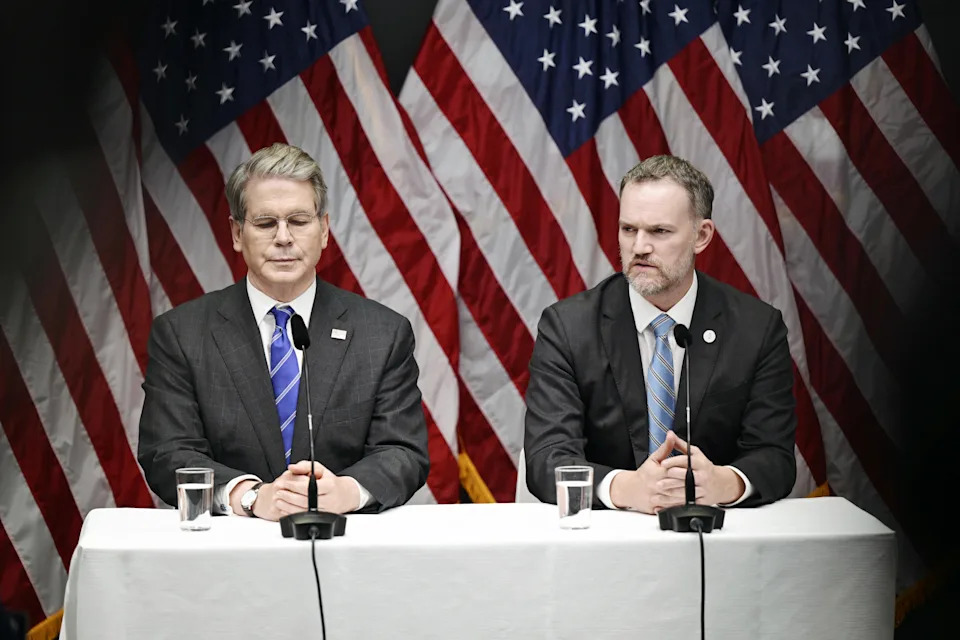
No tariff pause announced after US-China talks, with Trump set to make the 'final call'
Key Points
- US and Chinese negotiators concluded two days of trade talks in Stockholm, Sweden, without an immediate announcement on further tariff delays, leaving markets anxious about potential duty increases set for August 12.
- Treasury Secretary Scott Bessent described the talks as "very constructive," with a possible 90-day tariff pause still under consideration, pending President Trump's final decision.
- Both sides discussed a range of issues, including semiconductors, rare earth minerals, and Chinese export controls, but did not plan a face-to-face meeting between Trump and Xi Jinping.
- Trump's team emphasized that tariff rates could revert to higher levels seen earlier this year if no agreement is reached, with the president holding the ultimate authority to decide.
- This meeting marks the third in recent months between US and Chinese trade teams, building on previous discussions in Geneva and London, with ongoing communication expected.
Summary
US and Chinese trade negotiators concluded two days of talks in Stockholm, Sweden, without a definitive announcement on extending a tariff pause, raising concerns as higher duties loom on August 12. Treasury Secretary Scott Bessent called the discussions "very constructive," hinting at a potential 90-day delay, though President Trump will make the final call. Topics ranged from semiconductors, including Nvidia's AI chip exports to China, to rare earth minerals and Russian oil consumption, but no plans for a Trump-Xi meeting were set. Trump's team warned that tariffs could revert to triple-digit levels seen earlier this year if no deal is reached. This third round of talks in recent months builds on prior meetings in Geneva and London, with both sides committing to ongoing dialogue. Meanwhile, Trump's broader trade agenda includes a new EU tariff pact and negotiations with other nations like India and Canada before a self-imposed deadline. Markets remain on edge, hopeful for a delay to avoid economic disruption, as analysts suggest a pause could stabilize investor sentiment. The outcome of these talks, alongside Trump's decisions, will significantly impact global trade dynamics and economic forecasts in the coming weeks.
yahoo
July 30, 2025
Stocks

Gunman Kills Four and Himself at Midtown Manhattan Building
Key Points
- Tragic Incident: A gunman killed at least four people, including a police officer and a Blackstone employee, before taking his own life at 345 Park Ave. in Midtown Manhattan.**
- Location and Impact: The attack occurred in an office tower housing major firms like Blackstone, Rudin Management, the NFL, and KPMG, leading to widespread chaos and fear.**
- Shooter Details: Identified as 27-year-old Shane Tamura from Nevada, the suspect drove across the country, entered the building with a rifle, and fired on multiple floors before dying on the 33rd floor.**
- Response and Mourning: The city mourns the loss of innocent lives, with Mayor Eric Adams honoring the slain officer, Didarul Islam, as a hero who put his life on the line.**
- Lockdown and Fear: Employees at Blackstone and nearby firms like Jefferies and Citadel went into lockdown, with some barricading themselves in offices during the terrifying ordeal.**
Summary
A devastating shooting unfolded at 345 Park Ave. in Midtown Manhattan, where a gunman killed at least four people, including a police officer and a Blackstone employee, before taking his own life on the 33rd floor, occupied by Rudin Management. The suspect, identified as 27-year-old Shane Tamura from Nevada, drove across the country and entered the office tower—home to firms like Blackstone, the NFL, and KPMG—carrying a rifle. The attack began in the lobby, where four were shot, and continued on the 33rd floor, where another victim was killed. The incident sparked chaos, with police cordoning off the area and employees barricading themselves in offices or hiding in pantries. Nearby firms like Jefferies and Citadel also went into lockdown. Authorities are investigating Tamura’s motive, while the city mourns the loss of innocent lives. Mayor Eric Adams honored the fallen officer, Didarul Islam, a three-year veteran and immigrant from Bangladesh, as a true hero. The tragedy left a profound impact, with employees sharing worried messages and images of makeshift barricades during the harrowing event.
yahoo
July 29, 2025
Stocks
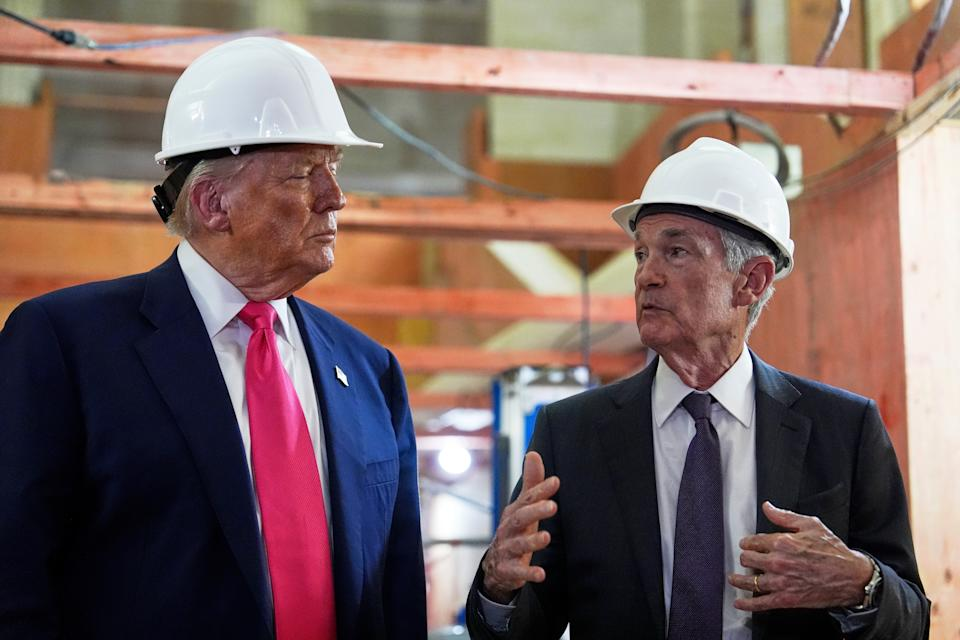
Trump says he will give Putin new 10-12 day truce deadline
Key Points
- Trump's New Deadline: US President Donald Trump has set a new, shortened deadline of 10 to 12 days for Russian leader Vladimir Putin to reach a truce with Ukraine, threatening economic penalties if unmet.**
- Secondary Sanctions Threat: Trump is considering secondary sanctions on countries like India and China that buy Russian exports such as oil, aiming to pressure Moscow by targeting its economic supporters.**
- Growing Frustration: Trump's latest actions reflect increasing impatience with Putin, despite past diplomatic efforts and personal conversations, as Russian attacks on Ukraine continue unabated.**
- Previous Threats Unmet: An earlier 50-day deadline and threats of 100% tariffs on Russia failed to halt the conflict, with Putin intensifying missile and drone strikes on Ukrainian cities.**
- NATO and Allied Support: NATO allies, including Germany, are in talks to provide additional air-defense systems to Ukraine, as Zelenskiy prioritizes protection against Russian attacks.**
Summary
US President Donald Trump has intensified pressure on Russian leader Vladimir Putin by announcing a new 10 to 12-day deadline for a truce with Ukraine, threatening economic penalties if unmet. Speaking in Scotland alongside UK Prime Minister Keir Starmer, Trump expressed frustration with Putin’s refusal to ceasefire, despite previous diplomatic efforts and a failed 50-day deadline set in July. He is now considering secondary sanctions on nations like India and China for purchasing Russian oil, viewing such trade as support for Moscow’s war economy. Trump’s growing impatience is evident as he shifts focus from Ukrainian leader Volodymyr Zelenskiy to Putin, criticizing the latter’s insincerity despite personal conversations. Meanwhile, NATO allies, including Germany, are working to bolster Ukraine’s air defenses with systems like Patriot amid ongoing Russian attacks. Trump’s threats echo Congressional proposals for steep tariffs on countries trading with Russia, though he has previously held off to preserve negotiations. He also highlighted Russia’s potential wealth from resources like rare earths, lamenting its focus on war over prosperity. Despite prisoner exchanges, no progress has been made toward ending the conflict that began with Russia’s invasion of Ukraine in February 2022.
yahoo
July 28, 2025
Stocks
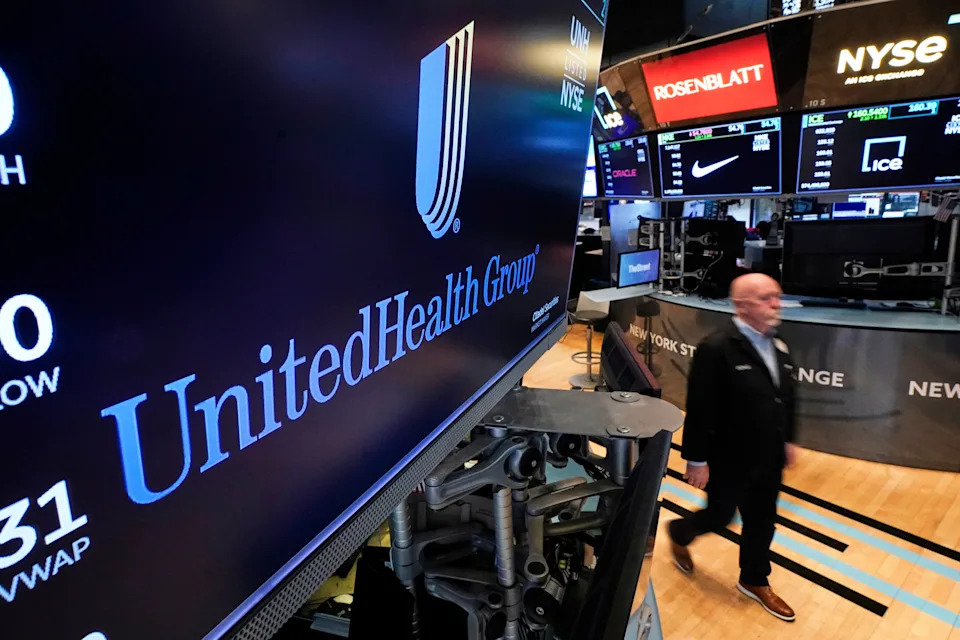
Health insurance companies have a problem — people are using their plans more
Key Points
- Centene (CNC) reported a surprising Q2 adjusted loss of $79 million, with a health benefits ratio increase to 93% from 87.6% last year, reflecting higher medical costs relative to premium revenue.
- Elevance Health (ELV) and Molina Healthcare (MOH) also faced similar challenges, with rising benefit expense ratios and lowered earnings guidance due to increased costs in Medicaid and Medicare programs.
- UnitedHealth Group (UNH) is expected to report a medical care ratio increase to 89.3% in Q2, signaling tighter margins, while facing a DOJ investigation over potential fraudulent billing in Medicare Advantage.
- Stock reactions varied, with Centene recovering to a 6% gain after an initial 15% drop, while Elevance and Molina stocks remained depressed after significant declines post-earnings.
- The healthcare sector (XLV) is the worst-performing in the S&P 500 this year, driven by industry-wide pressures from rising medical costs and narrow profit margins.
Summary
Centene (CNC) shocked investors with a Q2 adjusted loss of $79 million, driven by a health benefits ratio surge to 93% from 87.6%, indicating higher medical costs against premiums. This issue extends across the industry, with Elevance Health (ELV) and Molina Healthcare (MOH) reporting similar spikes in benefit expense ratios and lowered earnings outlooks, largely tied to Medicaid and Medicare programs. UnitedHealth Group (UNH), set to release Q2 earnings, faces expectations of a medical care ratio rise to 89.3%, alongside a DOJ probe into potential fraudulent billing in Medicare Advantage, which has already dented its stock by 4.7%. Stock reactions highlight market unease, with Centene recovering to a 6% gain after an initial 15% drop, while Elevance and Molina stocks remain depressed after significant declines. Centene's CEO reinstated earnings guidance and reported $48.7 billion in revenue, surpassing estimates, with hopes of improved Medicaid margins. The healthcare sector (XLV) struggles as the S&P 500’s worst performer this year, grappling with narrow margins and accelerating medical cost trends. UnitedHealth’s upcoming earnings call will be critical, as investors seek clarity on both financial pressures and legal challenges, with potential long-term impacts hinging on the DOJ investigation’s outcome.
yahoo
July 28, 2025
Stocks

Wall Street bull calls for 11% rally in S&P 500 to end 2025 as trade 'uncertainty' subsides
Key Points
- Oppenheimer's John Stoltzfus raised the S&P 500 year-end target to 7,100 from 5,950, the highest on Wall Street, anticipating an 11% rally.
- Progress in trade negotiations, including a 15% tariff deal with the EU, has reduced market uncertainty, prompting the target revision.
- S&P 500 earnings are projected at $275 per share for 2025, with a forward P/E ratio of 25.8, above historical averages.
- Corporate earnings resilience and upward revisions in guidance (41% of companies raised full-year forecasts) support continued bullishness.
- Analysts expect S&P 500 earnings growth of 13.9% in 2026, with strong fundamentals driving a V-shaped market recovery.
Summary
Wall Street's optimism for the S&P 500 has surged, with Oppenheimer's chief market strategist John Stoltzfus raising his year-end target to 7,100 from 5,950, the highest forecast, implying an 11% rally. This revision, announced after a US-EU trade deal setting a 15% tariff rate, reflects reduced uncertainty from trade negotiations. Stoltzfus projects 2025 earnings at $275 per share with a forward P/E ratio of 25.8, significantly above historical averages. Despite concerns of an overstretched rally, corporate earnings show resilience, with second-quarter growth at 6.4% and 41% of companies raising full-year guidance. Analysts anticipate 13.9% earnings growth in 2026, while strategists like Citi’s Stuart Kaiser and Morgan Stanley’s Mike Wilson highlight strong fundamentals and a V-shaped recovery akin to 2020. This bullish outlook underscores confidence in sustained market momentum over the next 6-12 months.
yahoo
July 28, 2025
Stocks
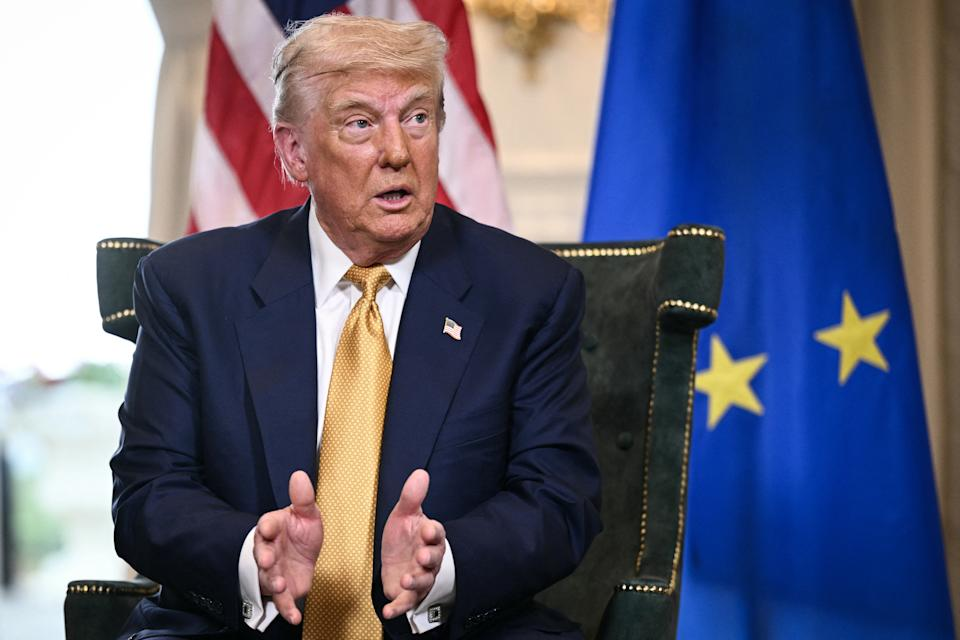
Japan Expects 1%-2% of $550 Billion US Fund to Be Investment
Key Points
- Japan expects only 1% to 2% of the $550 billion US fund to be direct investment, with the majority allocated to loans and loan guarantees.
- Tokyo anticipates saving approximately ¥10 trillion ($68 billion) through reduced tariff rates in its deal with the US.
- Profits from the investment portion will be split 90-10 in favor of the US, a shift from Japan's initial 50-50 proposal.
- The fund will support not only Japanese and US firms but also international companies, such as a Taiwanese semiconductor firm building in the US.
- Japan aims to implement the $550 billion fund during President Trump’s term, with government-backed organizations like JBIC and NEXI leading the financing.
Summary
Japan has agreed to a $550 billion fund with the US, but only 1% to 2% will be direct investment, with the rest primarily in loans and loan guarantees, as explained by chief negotiator Ryosei Akazawa. This structure, backed by Japanese institutions like JBIC and NEXI, aims to minimize Japan's financial exposure, with potential losses estimated at just tens of billions of yen. Profits from investments will be split 90-10 in favor of the US, a compromise from Japan's initial 50-50 proposal. Additionally, Japan expects to save ¥10 trillion ($68 billion) through lower tariffs, with rates anticipated to drop to 15% on cars and other goods. Akazawa emphasized that the fund isn’t a direct cash transfer to the US and will generate revenue through interest on loans and fees on guarantees. The initiative will also support international firms, such as a Taiwanese semiconductor company in the US. While Japan pushes for swift tariff reductions via executive order, details on implementation and timelines remain unclear, with no joint document signed yet. The deal, seen as a model by the Trump administration, aligns with a similar US-EU agreement involving $600 billion in investments and 15% tariffs. Japan aims to finalize the fund’s rollout during Trump’s term, balancing economic benefits with strategic concessions.
yahoo
July 28, 2025
Stocks

Thai, Cambodian Leaders Set for Peace Talks After Trump’s Tariff Deal Threats
Key Points
- Thai and Cambodian leaders, Phumtham Wechayachai and Hun Manet, are meeting in Kuala Lumpur to negotiate a ceasefire amid the deadliest border clash in over a decade, facilitated by Malaysian Prime Minister Anwar Ibrahim.
- The talks follow US President Donald Trump's tariff threats, pressuring both nations to halt hostilities, with US and Chinese envoys present to support peace efforts.
- Clashes, ongoing since July 24, have resulted in over 30 deaths and displaced 150,000 civilians, with both sides accusing each other of aggression.
- Thailand insists on a bilateral resolution, troop withdrawal, and cessation of lethal force for any ceasefire, while Cambodia is open to an unconditional halt to hostilities.
- The conflict stems from historical border disputes, exacerbated by differing interpretations of early 20th-century treaties, with recent escalations involving heavy artillery and airstrikes.
Summary
Thai and Cambodian leaders, Phumtham Wechayachai and Hun Manet, are set to meet in Kuala Lumpur on Monday to address the deadliest border conflict between the two nations in over a decade, facilitated by Malaysian Prime Minister Anwar Ibrahim, chair of ASEAN. The talks, prompted by US President Donald Trump’s tariff threats to withhold trade deals unless a ceasefire is reached, follow violent clashes since July 24 that have killed over 30 people and displaced 150,000 civilians. Both the US and China have sent envoys to support peace efforts, with Trump claiming credit for pushing the dialogue forward. Thailand remains skeptical of Cambodia’s commitment, prioritizing sovereignty and civilian safety, while Cambodia appears more open to an unconditional ceasefire. The conflict, rooted in historical border disputes over early 20th-century treaties, has seen heavy artillery and airstrikes, with both sides accusing each other of targeting civilians. Thailand demands a bilateral resolution and troop withdrawal, while economic pressures from potential US tariffs loom large, especially for trade-reliant Thailand. The talks aim to de-escalate tensions and restore peace, though deep-seated mistrust and territorial disagreements pose significant challenges.
yahoo
July 28, 2025
Stocks

'Haves and have-nots': The stock market thinks more consumers are reaching a breaking point
Key Points
- Consumer Discretionary Sector Struggles: The Consumer Discretionary sector (XLY) is underperforming, up only 0.3% year-to-date, making it the second-worst sector in the S&P 500, ahead of only Health Care.**
- Economic Disparities Impact Spending: High interest rates, economic uncertainty, and a K-shaped economy are affecting consumer spending, particularly among lower-income households, as noted by experts like Liz Ann Sonders.**
- Earnings Reflect Consumer Weakness: Recent earnings from companies like Chipotle (CMG), Hilton (HLT), and Hasbro (HAS) show declining sales and consumer price sensitivity, reinforcing a challenging environment for consumer-facing firms.**
- Wealthier Consumers Resilient: Companies targeting higher-income consumers, such as JPMorgan (JPM) and American Express (AXP), report sustained spending strength, contrasting with struggles in lower-income segments.**
- Potential for Recovery: Despite ongoing pressures, some beaten-down Consumer Discretionary stocks like Tesla (TSLA) show signs of short-term momentum, as per Bespoke Investment Group analysis.**
Summary
Consumer stocks are losing favor among US investors as the Consumer Discretionary sector (XLY) lags significantly behind the S&P 500, with only a 0.3% year-to-date gain, making it the second-worst performer. High interest rates, economic uncertainty, and shifting spending patterns are weighing on the sector, which includes major names like Nike (NKE), Target (TGT), Tesla (TSLA), and Amazon (AMZN). Experts highlight a K-shaped economy, with lower-income consumers cutting back, as seen in weaker earnings from Chipotle (CMG), Hilton (HLT), and Hasbro (HAS), while higher-income spending remains robust, per reports from JPMorgan (JPM) and American Express (AXP). Airlines like American Airlines (AAL) also note softer domestic travel demand. Despite significant outflows from the sector, some stocks show potential for short-term recovery, with Bespoke Investment Group identifying momentum in names like Tesla (TSLA). However, the consumer outlook remains fragile, with Oxford Economics suggesting more challenges before improvement in 2026. This disparity underscores a bifurcated consumer landscape where companies targeting price-sensitive shoppers face a hyper-promotional environment to drive demand.
yahoo
July 27, 2025
Stocks
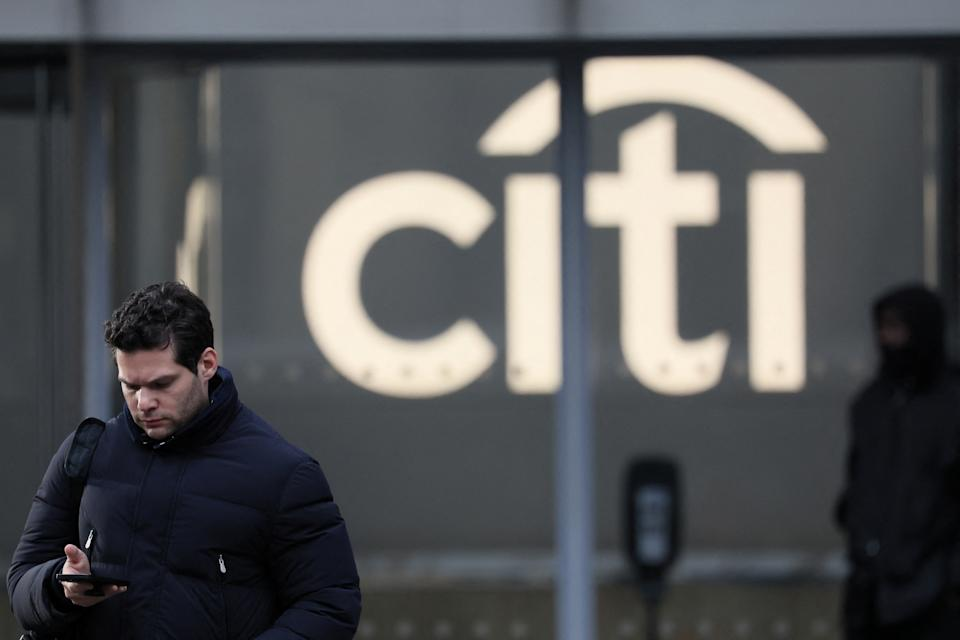
Federal Reserve meeting, July jobs report, and Big Tech earnings: What to watch this week
Key Points
- Record Highs: The S&P 500 and Nasdaq Composite closed at record levels last week, with gains of 1.5% and 1.3% respectively, while the Dow Jones Industrial Average rose by 1%.**
- Busy Week Ahead: Investors are preparing for a packed week with a Federal Reserve meeting, the July jobs report, and earnings from major tech companies like Apple, Amazon, Microsoft, and Meta.**
- Economic Data: Key economic updates include the second quarter GDP estimate, the Fed's preferred inflation gauge (core PCE), and labor market data, which could influence market directions.**
- Federal Reserve Focus: Markets anticipate no interest rate cut at the July Fed meeting (3% chance), with attention on potential dissents among FOMC members and a higher likelihood of a cut by September (64% chance).**
- Earnings Growth: S&P 500 earnings growth is pacing at 6.4% for the current quarter, with positive outlooks for 2025 and 2026 supporting the ongoing stock rally.**
Summary
The stock market has reached record highs, with the S&P 500 and Nasdaq Composite posting significant weekly gains of 1.5% and 1.3%, respectively, while the Dow Jones Industrial Average rose 1%. Investors are gearing up for a critical week on Wall Street, featuring a Federal Reserve meeting, the July jobs report, and earnings from Big Tech giants like Apple, Amazon, Microsoft, and Meta. Economic data releases, including the second quarter GDP estimate and the Fed's preferred inflation gauge (core PCE), will also shape market sentiment. Despite expectations of no rate cut in July, markets are pricing in a potential cut by September. Corporate earnings are strong, with the S&P 500 on track for 6.4% growth this quarter, bolstered by optimistic forecasts for future years. Additionally, speculative trading has surged, raising questions about market sustainability, though near-term equity returns remain promising according to Goldman Sachs. This confluence of events underscores a pivotal moment for investors as they navigate economic indicators, policy decisions, and corporate performance to start August.
yahoo
July 27, 2025
Stocks

Trump tariffs live updates: Japan says $550 billion 'investment' in US could finance Taiwanese chipmaker; Trump says EU deal '50-50'
Key Points
- Japan's $550 billion investment in the US, announced by President Trump, may partly finance a Taiwanese chipmaker, potentially TSMC, to build plants in the US, as suggested by Japanese trade negotiator Ryosei Akazawa.
- TSMC previously committed $100 billion for US investments, including three plants in Arizona, with one already operational, highlighting the strategic importance of semiconductor production.
- The US-Japan trade deal includes a 15% tariff on imported goods, but disagreements persist over profit sharing, with the US claiming 90% and Japan advocating for a split based on contributions.
- Trump's broader trade strategy involves tariffs ranging from 15% to 50% on various countries, with ongoing negotiations with the EU, India, Canada, and China, alongside finalized deals with the Philippines and Indonesia.
- South Korean company LG Electronics faces challenges from impending US tariffs, planning price adjustments and production shifts, while noting a consumer rush to buy appliances before tariff implementation.
Summary
President Trump recently announced a $550 billion investment from Japan into the US as part of trade negotiations to reduce tariffs, with potential funding directed toward a Taiwanese chipmaker, likely TSMC, for building US plants. TSMC had already pledged $100 billion for this purpose, including facilities in Arizona. The US-Japan deal imposes a 15% tariff on imports, though profit-sharing terms remain contentious. Meanwhile, Trump is navigating trade talks with the EU, India, Canada, and China, setting tariffs between 15% and 50%, and has finalized agreements with the Philippines and Indonesia at 19% tariffs. Additionally, South Korean firm LG Electronics is bracing for US tariffs starting August 1, with plans to adjust prices and shift production, as consumers preemptively purchase appliances. Trump's trade policies continue to reshape global economic dynamics, influencing supply chains and market uncertainties.
yahoo
July 27, 2025
Stocks

This week in Trumponomics: Three cheers for higher taxes
Key Points
- Trump's Trade Deal with Japan: President Trump announced a trade deal with Japan on July 23, imposing a 15% tariff on Japanese imports, including cars, up from an average of 1.6% before his presidency, marking a significant 13.4 percentage point increase.**
- Market Reactions: Despite the tariff hike, markets responded positively, with the S&P 500 reaching a record high and Japan's Nikkei index rising, as the 15% rate was lower than the anticipated 20-25% tariffs.**
- Broader Tariff Increases: Trump's policies have raised the average import tax from 2.5% to about 20%, affecting various countries and products, with specific tariffs on China (34-40%) and others like Canada and Mexico (10-25%).**
- Economic Impact: The Yale Budget Lab estimates these tariffs could generate $290 billion annually in revenue, offsetting much of the $375 billion tax cuts from Trump's recent legislation, effectively acting as a tax hike on American businesses and consumers.**
- Market Sentiment and Economic Outlook: Wall Street's positive reaction stems from clarity and tariffs aligning closer to initial forecasts (10-15%), though economic growth is expected to slow, corporate profits are declining, and tariff-induced inflation may emerge.**
Summary
President Trump's trade policies have significantly altered the landscape of U.S. import taxes, with a recent deal on July 23 imposing a 15% tariff on Japanese goods, up from 1.6% pre-presidency. Markets reacted positively, with the S&P 500 hitting a record high, as the rate was lower than the feared 20-25%. Overall, Trump's tariffs have raised the average import tax from 2.5% to 20%, impacting countries like China (34-40%) and generating an estimated $290 billion annually, offsetting much of a $375 billion tax cut. While Wall Street cheers the clarity, as tariffs align closer to initial 10-15% forecasts, economic concerns loom with slowing growth, declining corporate profits, and potential inflation. Trump's approval rating hovers near a second-term low of 45%, though tariff effects remain less felt by the public compared to other controversies. However, these tax hikes on businesses and consumers are real and may soon become more noticeable, potentially shifting public and market sentiment.
yahoo
July 26, 2025
Stocks

Retirement savers are getting a boost from low mutual fund fees
Key Points
- Historic Lows in Fees: Average equity mutual fund expense ratios in 401(k) plans have decreased significantly from 0.76% in 2000 to 0.26% in 2024, as per the Investment Company Institute (ICI) report.**
- Impact of Fees on Savings: A mere 0.5% difference in fees over 35 years can reduce a retirement account balance by over $37,000, demonstrating the long-term impact of lower fees.**
- Target-Date Funds Also Cheaper: Expense ratios for target-date funds, popular among retirement savers, have dropped from 0.67% in 2008 to 0.29% currently.**
- Fee Transparency Challenges: While fees are often hidden, employers must provide fee disclosure notices, and resources like FINRA’s fund analyzer can help uncover costs.**
- Advice for Savers: Opting for low-cost index funds or options with expense ratios below 0.5% can help maintain the trend of reduced fees.**
Summary
A recent Investment Company Institute (ICI) report brings good news for retirement savers: the average expense ratios for equity mutual funds in 401(k) plans have hit historic lows, dropping from 0.76% in 2000 to 0.26% in 2024. This reduction, though seemingly small, has a significant impact over time; for a $25,000 balance growing at 7% over 35 years, a 0.5% higher fee could cost over $37,000 in retirement savings. Target-date funds, a favored retirement vehicle, also saw fees decline from 0.67% in 2008 to 0.29% now. ICI’s Sarah Holden emphasized that this decades-long trend of declining fees benefits investors planning for their financial future. However, uncovering these fees can be tricky, though employers must provide disclosure notices, and tools like FINRA’s fund analyzer assist in transparency. The report underscores the importance of low-cost options like index funds to maximize retirement savings, as fees—whether direct or indirect—reduce investment returns and ultimately impact the money available for retirement.
yahoo
July 26, 2025
Stocks

Trump tariffs live updates: Trump says EU deal '50-50'; US, Japan differ on trade deal profits
Key Points
- Trade Deal with EU Uncertain: President Trump estimates a "50-50" chance of securing a trade deal with the European Union before the August 1 deadline, with a meeting scheduled in Scotland to push negotiations forward.**
- US-Japan Deal Faces Challenges: Despite a recent trade agreement involving a $550 billion Japanese investment and a 15% tariff on imports, disagreements over profit sharing (US proposing 90-10 split, Japan wanting contribution-based) are creating tensions.**
- Tariff Policies Expanding: Trump announced tariffs ranging from 15% to 50% for various partners, with tougher rates for difficult negotiations, alongside new deals with the Philippines and Indonesia at 19% tariffs.**
- Canada Negotiations Stalled: Trump expressed frustration with Canada, hinting at imposing a 35% tariff on goods outside the US-Canada-Mexico agreement if no deal is reached.**
- China Deal in Progress: Discussions with China are advancing, with Trump noting the "confines of a deal" as both sides prepare for upcoming talks.**
Summary
President Trump provided updates on multiple trade negotiations, expressing cautious optimism about a potential EU deal with a "50-50" chance ahead of the August 1 deadline, as European Commission President Ursula von der Leyen prepares to meet him in Scotland. Meanwhile, a recently announced US-Japan trade agreement, involving a $550 billion investment and 15% tariffs, is already strained over profit-sharing disputes. Trump also outlined a broader tariff strategy, setting rates between 15% and 50% for various partners, with new 19% tariffs on imports from the Philippines and Indonesia. Negotiations with Canada appear stalled, with Trump considering a 35% tariff on non-agreement goods, while talks with China show progress toward a deal. Additionally, Trump highlighted upcoming beef exports to Australia and ongoing tariff impacts on businesses like Boston Beer Company, which is managing costs through price increases. These developments reflect Trump's aggressive trade stance, aiming to reshape global economic relationships through tariffs and strategic investments, though challenges and disagreements persist across multiple fronts.
yahoo
July 26, 2025
Stocks

Trump clashes with Powell over Fed renovations during unusual visit, says he'd 'love' lower interest rates
Key Points
- Trump's Visit to Federal Reserve: President Trump made a rare visit to the Federal Reserve, touring the $2.5 billion renovation site with Chairman Jerome Powell, amidst ongoing criticism of the project's costs.**
- Cost Dispute: A public disagreement arose when Trump claimed the renovation cost had risen to $3.1 billion, which Powell corrected, clarifying that the higher figure included a third, previously completed building.**
- Interest Rate Pressure: Trump used the visit to push for lower interest rates, expressing hope that Powell would "do the right thing," while downplaying tensions and dismissing notions of firing the Fed chair.**
- Political and Legal Scrutiny: The Fed faces mounting pressure from Trump allies, including calls for reviews, lawsuits over transparency, and potential congressional investigations into its operations and renovation spending.**
Summary
President Trump made an unprecedented visit to the Federal Reserve on July 24, 2025, touring the $2.5 billion renovation project of the Marriner Eccles and East Buildings with Chairman Jerome Powell. The visit, marked by a public spat over costs—Trump cited a $3.1 billion figure, which Powell corrected as including a previously renovated third building—highlighted ongoing tensions over the project's expense. Trump also pressed Powell for lower interest rates, though he distanced himself from firing the Fed chair, focusing instead on project oversight. Accompanied by Republican senators and aides, Trump critiqued the "luxurious" renovations but avoided labeling them a fireable offense. Meanwhile, the Fed defended the high costs, citing security upgrades and unforeseen issues like asbestos. Beyond the visit, Powell faces broader challenges, including calls for internal reviews, lawsuits over transparency, and potential congressional probes from Trump allies. Despite these pressures, the Fed expressed gratitude for Trump’s encouragement to complete the project, which began in 2022 and is set for completion by 2027. This event underscores the intersection of political influence, monetary policy, and public spending scrutiny surrounding the central bank.
yahoo
July 25, 2025
Stocks